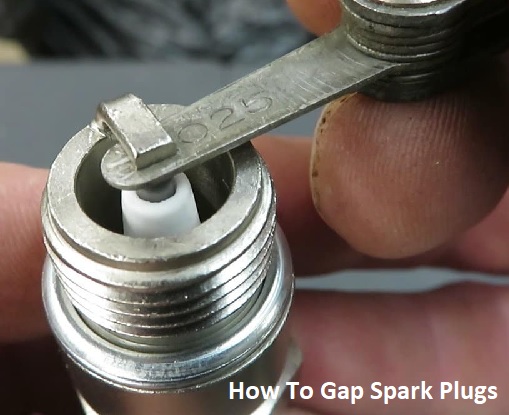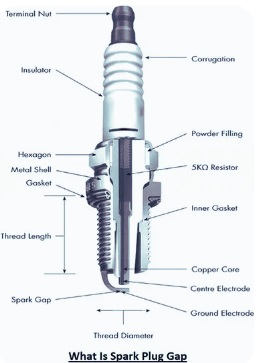At the time of replacement of spark plugs, check that the plug comes with an accurate gap that is good for engine’s working. The gap is the distance between the center and side electrodes, which causes arcing at an accurate voltage that ignites fuel and produces combustion for running the engine. Here we will cover details for gap spark plugs and other related factors for getting more details.
Importance of Gapping
- The distance of the gap on the spark plug is based on the voltage and amperes produced as a result of the ignition coil.
- Gap features are based on vehicle manufacturers at the time of engine design and normally exist in the owner’s manual.
- The accuracy of the gap is important for the engine’s proper working and high efficiency.
- Spark plugs that do not have a proper gap cause wear, ignition system stress, and also cylinder misfires.
- If a large gap exists, then ignition system components need to operate hard to jump over the gap of the spark plug, ignition coil, and control modules.
- It is also if a spark is blown out in high-turbulence combustion chambers.
- The gap, which is small, not a completely ignitable air mixture, causing low power and high tailpipe emissions.
How Do I Gap a Spark Plug?
Follow these steps to gap a spark plug.
- First of all, find a gap gauge or feeler gauge.
- Clean the spark plug. If it it’is, you won’t have a problem, but if you’re checking the spark plug that is in the vehicle, it will have dust on the contact points. For cleaning spark plugs, avoid abrasive materials.
- Now check the existing gap of the spark plug; with the use of a gap gauge or feeler gauge, move the tools through the electrodes to find the values. Write values and make a comparison with the recommended value of the owner’s manual.
- Define any adjustments; use accurate measurements on the gap gauge. If you do not get an accurate feeler gauge through the gap, then widen the gap. If the tool runs over a gap without the connection of electrodes, the gap is large and needs to be narrowed. With the use of the spark plug tool set, gap and bend the ground electrodes in a narrow gap. Carefully set the adjustment; do not bend the electrodes larger as compared to a fraction of an inch. It is no longer working but not made for handling high pressure. Avoid hitting the central electrode. If you snap off the lower electrode, damage the central electrode from prying too high on it, and use a new spark plug.
- Check the gap; repeat the setting process until the tool fits accurately between the electrodes.
Outcomes: Incorrect Spark Plug Gap
- If the spark plug gap is not properly set, that causes engine problems. The users will have low experience of power, spark plug fouling, wear on the plug, or poor gas mileage.
- A small gap gives a weak spark for the completion combustion process in the engine, and a very wide gap causes the spark plug not to fire properly and also causes misfires at high speeds.
How to Use a Coin-Style Gap Tool
- Coin-style gap tools are common and easily available. But not each person uses these tools in an accurate way, and not each spark plug is made for handling this tool.
- So it is needed to find the check-in car manual type of spark plug for using.
- If the plug uses costly metals, such as platinum or iridium, do not use a coin-style gapper for metal uses copper or nickel plugs, then you can use that tool. But use accurately.
Do Spark Plugs Always Have a Gap?
-
- It is not always; in the past it needed gap spark plugs, but current used spark plugs come with a gap. It is referred to to check the gap accurately set for the vehicle given the setting at the time of installing spark plugs.
- The gap setting is different based on the vehicle but normally has a value of 0.028″ and 0.060″.
Is it possible to gap spark plugs without a tool?
- Maintenance Spark plug gap is important for proper working of the spark plug and smooth operation. Use an accurate tool for gapping spark plugs. But if you do not have a tool, follow this process. For this purpose, use the manual of the vehicle, coins, and a screwdriver. Follow these steps to gap a spark plug without using tools.
- First of all, use a torque wrench to loosen the older spark plug connection. Use a socket wrench, but the use of a torque wrench is good for the installation of new plug sets.
- Remove the spark plug on the ignition system. Try to avoid damaging the spark plug wire.
- Find the recommended gap for the car spark plug. It is mentioned in the manual of vehicle manufacturers.
- Now, make a comparison of the gap with the coin size. A penny with dimensions 0.06 inches, and a dime is 0.053 inches. If the recommended gap dimensions are not according to these two, use a spark plug gap gauge.
- If the coin easily fits in the given details, use it as a gapper. Slid coins between spark plug gaps. If there is a measurement configured with the spark plug gap setting
- Larger gap. Use the back side of the screwdriver for bending the ground electrode.
- For a narrow gap, use coin push ground electrodes outward direction.
- Do not touch the middle electrode tip. Spark plug gap lies in accurate gap values. It is good to use spark plug gapping tools.
FAQs
What will happen if I use an incorrect spark plug gap?
- • A larger gap causes strain for the spark plug, ignition coil, and control system, and a very low gap causes incomplete combustion. In these two conditions, fuel economy is affected.
How often should spark plugs need to be replaced?
- It is based on vehicle and spark plug type but normally ranges from 30,000 to 100,000 miles.
Can we use a coin-style gap tool for all types of spark plugs?
- It is not recommended that coin-style gap tools be used for iridium, platinum, or spark plugs. A feeler gauge is used for that purpose.
What to do if you have spark plug gap that is too wide or too narrow?
- With the use of an accurate spark plug gapping tool for measuring and setting the gap.
How tock if the spark plug gap is correctly adjusted?
- Before installation of the spark plug, check the gap with the use of a coin-style or feeler gauge gap tool based on the type of spark plug.
How to Gap Spark Plugs?
- First of all, get the required gap or feeler gauge, check that the spark plug is clean, and do not use harsh materials.
- Use a gauge for measuring the current gap.
- Use certain spark plug gapping tools for any necessary tweaks.
- Do it properly; any slight fault damages electrodes.
- Again, check the gap until it is configured within the given range.
What is the best technique for gapping spark plugs?
- For setting gap, use a spark plug gap tool. Bend the ground electrode for a narrow gap or bend it to widen it. Do the setting in the proper way; do not bend the electrode more than some fraction.
Are spark plugs in need of gapping?
- It can be; spark plug part numbers need to be found in different engines from different suppliers.
What is the simple rule for spark plug gaps?
- Naturally aspirated features cause it to work well with a hot plug that has a gap in the range of 0.030 to 0.035 inches.
- Forced induction and nitrous-assisted mills are good for cold spark plugs gap in the range of 0.020 to 0.025 inches.
Does spark plug gap affect working?
- In some engines, working performance increases with spark plug gap open toward the intake valve. But without testing different index positions of the engine on the dyno, it is not possible to define which index affects performance.
What Happens if I Ignore Gapping?
- Engine misfiring
- Rough idling
- Engine does not start.
- Engine knocking
- Bad engine performance
- Stalling
What happens if the spark plug gap is wrong?
- The incorrect plug gap for an engine can provide a high rate of misfires, plug fouling, poor fuel economy, and accelerated plug wear. It is good to check the gap according to the manufacturer’s features.
What is the minimum gap between spark plugs?
- Gap setting is different for vehicles, but common is 0.028″ and 0.060 60″.

